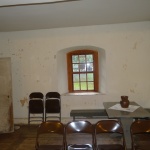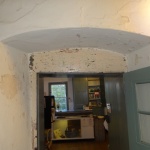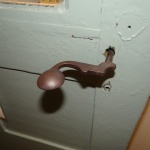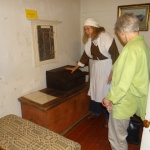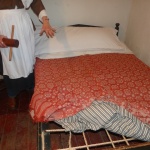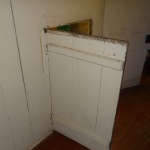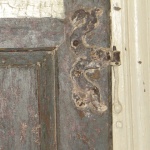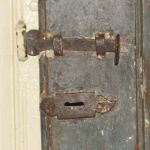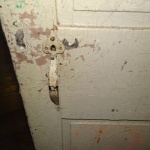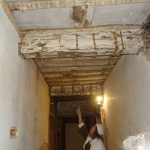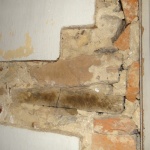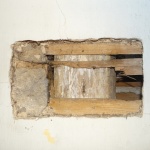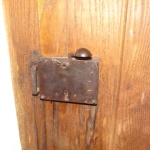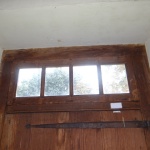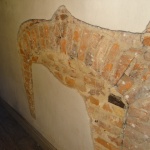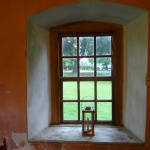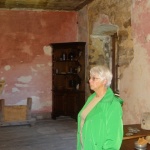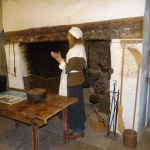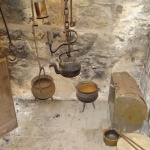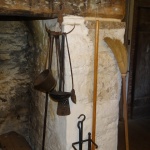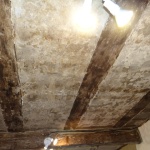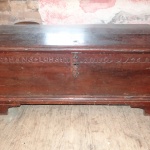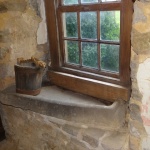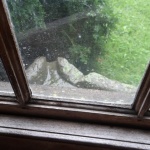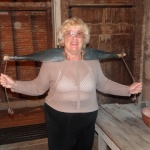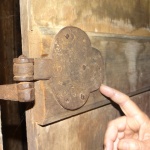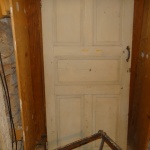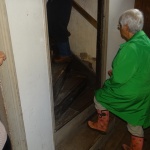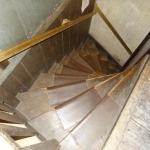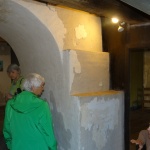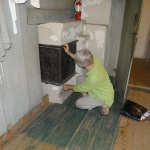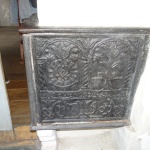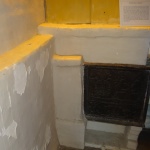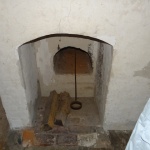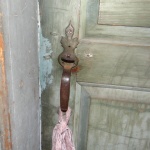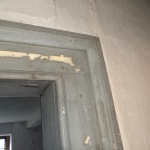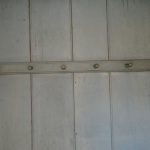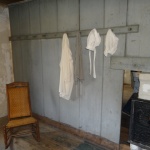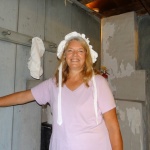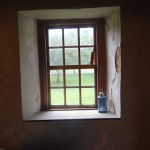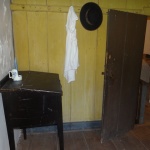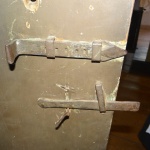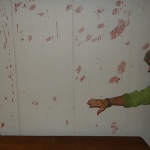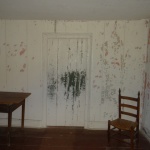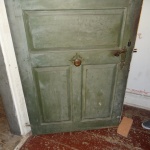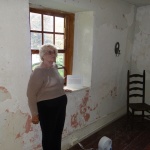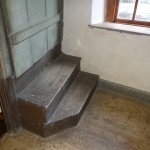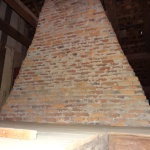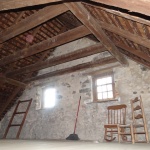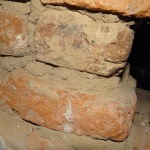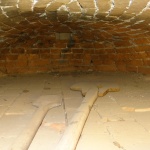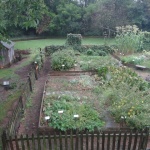In August, on a day of torrential rains, some CGC members visited Schifferstadt, the historic German architectural museum in Frederick , to enhance our historic preservation knowledge. Some were curious, others could claim German heritage and I have a 1780’s modest farmhouse built by Swiss immigrants with some remaining architectural elements I wanted to compare to Schifferstadt.
Unlike other historical houses, Schifferstadt is mostly bare of furnishings other than a few essential pieces. It forces you to look at the building structure and construction materials of the house itself from room to room. The tour is led by a costumed docent and begins in a gathering room where visitors are given an overview.
Quick recap:
The farmland was purchased in 1746 by the Joseph Bruner family who were from “Schifferstadt” in SW Palatine Germany. His youngest son, Elias, purchased the farm from Joseph and built a much more substantial stone structure in 1758. This was part of the French and Indian War period, so the massive construction may have served as a fortress for protection of the family and neighbors when the government refused to send militia to protect settlers. The docent also surmised that it may have been used for religious meetings. The sandstone used to build the house came from a local quarry near Walkersville, building with stone also indicated the social standing of the next generation and their stability.
Of note are the many arches, a five plate German stove and decorative forged hardware designs particular to German blacksmiths. Sadly, my camera battery died just as we were descending to the cellar which had a fascinating vaulted area used for preservation purposes and a huge boulder that the house incorporated within, rather than removed. Outdoors was a garden set up in traditional German 4 square style with pathways. It was a bit worse for wear in needing weeding and upkeep, but had representative herb plantings and fruiting trees and shrubs. Despite the pouring rain, we did manage to walk about in it and look closely.
The following pictures are closeups of architectural items we saw with some commentary. (Click to enlarge and use arrows to progress)
- Large room just off the visitor entry. High ceilings and first arched window.
- Note how thick this pass- through is with the slight arch.
- The door handle between the rooms.
- Our docent and Connie in downstairs BR. Chest, bible stand and bible vault.
- Low rope bed with feather matress and woven coverlet. Docent has rope tightener.
- This lower door adjoined the downstairs bedroom and allowed hear from stove to enter the room.
- A very decorative hinge.
- Forged door bolt.
- Door handle
- Extremely tall ceilings. A hewn summer beam
- Exposed wall interior , plugged with mortar, stone, plant material
- Riven lath nailed to posts for the plaster
- A door lock
- Huge front door with long hinge and bank of windows
- Arched fireplace, bricked in.
- One of the lovely deep, arched windows downstairs
- Diane in the huge kitchen area,
- Docent in front of the kitchen firepolace
- Some of the hanging pots and paraphernalia
- Kithen tools
- Kitchen ceiling with plater between the beams
- A featured piece of furniture-chest from 1746.
- A cool window sink for disposing of grey water
- Here’s the exterior drain outside the sill
- Marjorie displays a yoke
- Kitchen hinge and pintle
- A German 5 panel door in the kitchen
- Diane starts up the winding stairs
- Here’s the stairwell looking down
- Previous picture didn’t show. A massive archway in the second floor hall
- A 5 plate German stove in the original spot
- 1758 iron plate with Biblical references
- Note all the masonry jutouts for the firebox area.
- One of two opposing fireplaces in the hall.
- Another door handle example
- Moulding around the doors
- Pegs were used for clothing
- For example–here’s some clothing
- A mobcap
- Upstairs windows in the bedrooms were also substantial
- Each bedroom was painted/stained a different color. Writing desk.
- Example of a latch
- Connie shows how wide the wood panels are.
- These bedrooms were all quite large
- This bedroom door had a centered knob.
- Marjorie listens to docent by bedroom window
- Two steps going to the attic
- Gigunda chimney rising up in attic center
- POst and beam framing in attic.
- Very old handmade bricks
- The downstairs baking “Squirrel” oven with bread paddles.
- View of part of the garden from second story bedroom

